deepeye.hu
Astronomical Drawings of Peter Kiss
Astronomical Drawings of Peter Kiss




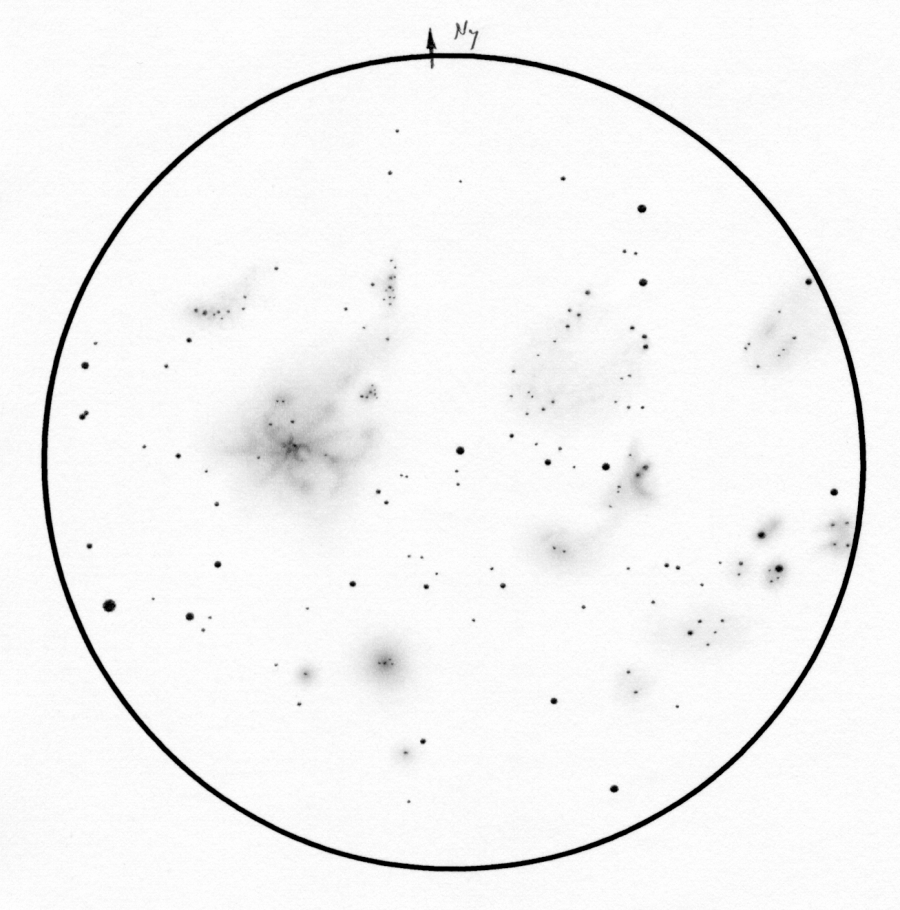
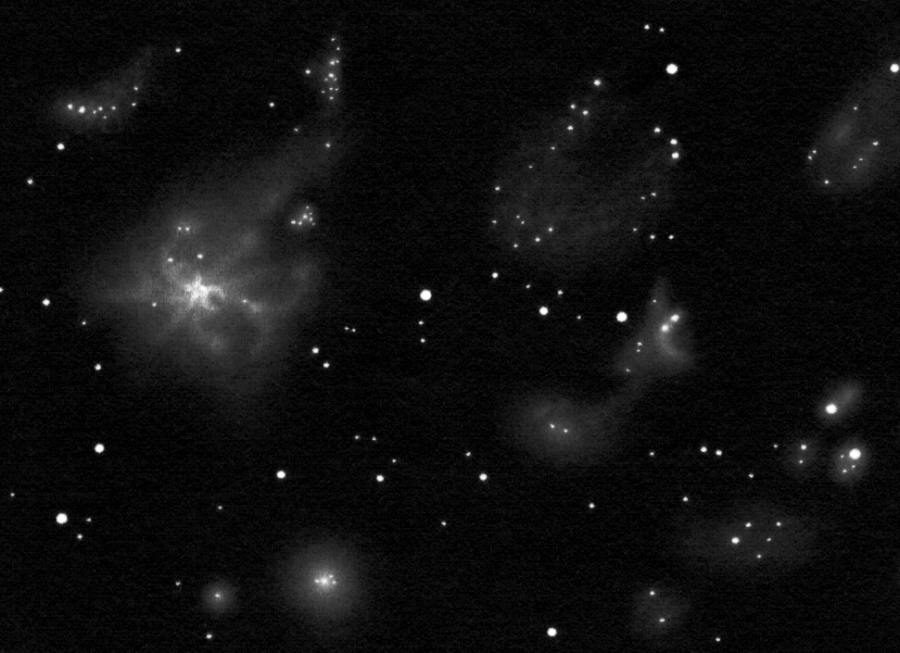
The Magellanic clouds are a special part of the sky. Even using a small telescope one can wander among the extragalactic nebulae, clusters and star forming regions through multiple fileds of view. The most beautiful one is the Tarantula Nebula. This was the first object I aimed my scope at in the southern sky. I was immediately disappointed because using 16x enlargement it looked like a globular cluster and didn't show many details. Later I took a look at it with greater enlargement and I found it to be one of the most beautiful and detailed diffuse nebulea in the sky.
This field is special from a drawing perspective as well. Generally I start with the stars that give the skeleton of the field. Then I draw all the stars in the field. After all this the main attraction, the object can come. Here in this case the skeleton of the field was made of deep-sky objects as well. By far the brightest among them is the Tarantula Nebula. It's also full of spectacular details. The second brightest object is the open cluster NGC 2100 below the Tarantula. It looks like a globular cluster and a couple of stars or star groups can be seen around its core. The arch shaped NGC 2074 is really beautiful as well in the right hand side of the field. This is an emission nebula - open cluster complex. Altogether about 20 NGC, IC and other nebule, clusters, associations and milky-way patches ("Magellanic-cloud patches" ?) can be seen in the field of view that is slightly bigger than 1 degree. Some of them are inhomogenious and almost all exhibit some kind of detail. The sight of this area and especially the Tarantula Nebula in a larger telescope exceeds all imagination. And this little 4" Dobsonian shows a lot as well.
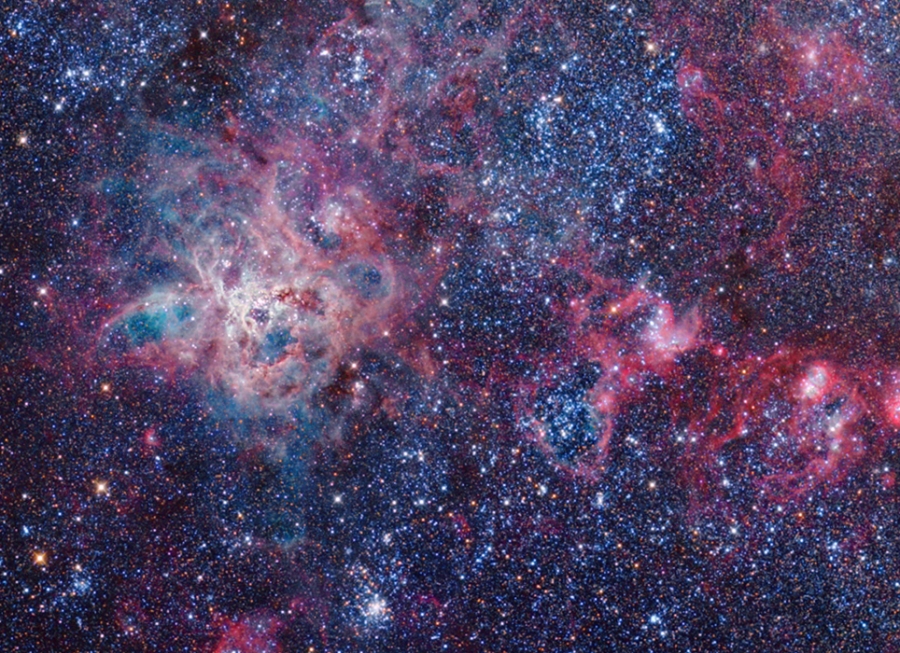

The photo on the left, courtesy of Iván Éder was made using a 20 cm astrograph. Iván's original photograph has been rotated and cropped to show a similar area of the sky as the inverted drawing.
It is not easy to compare the photograph and the drawing. This area is so complex. The position of the brighter stars and star clusters can help to match them. The little telescope shows much less detail in the nebulae than you can see in the photo. But it is clearly visible that this is a special part of the sky. I think the eyepiece impression in a larger telescope outcompetes any photograph of the Tarantula Nebula. Though the nebula will never be as detailed visually as in the photos. Another thing is that so far I have never seen a photograph that shows realistically the huge dynamic range between the brightest and faintest areas of the Tarantula Nebula.
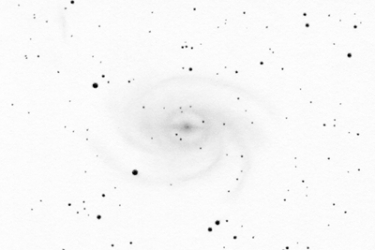
Pavo galaxy
The grand spiral galasy of Pavo
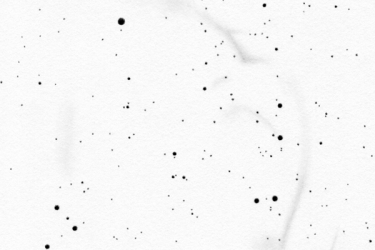
Panorama drawing
Huge and faint supernova remnant in the southern sky
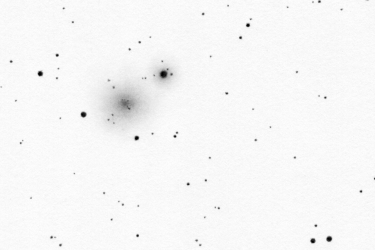
Centaurus globular cluster
The second globular in Centaurus

Apus globular cluster
Globular cluster close to the Southern celestial pole
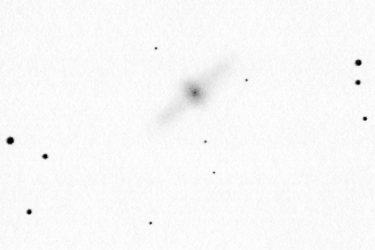
Centaurus galaxy
Polar ring galaxy
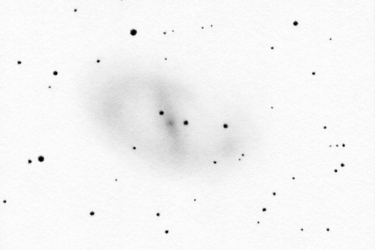
Ara galaxy
Barred spiral galaxy in the thick of the Milky Way